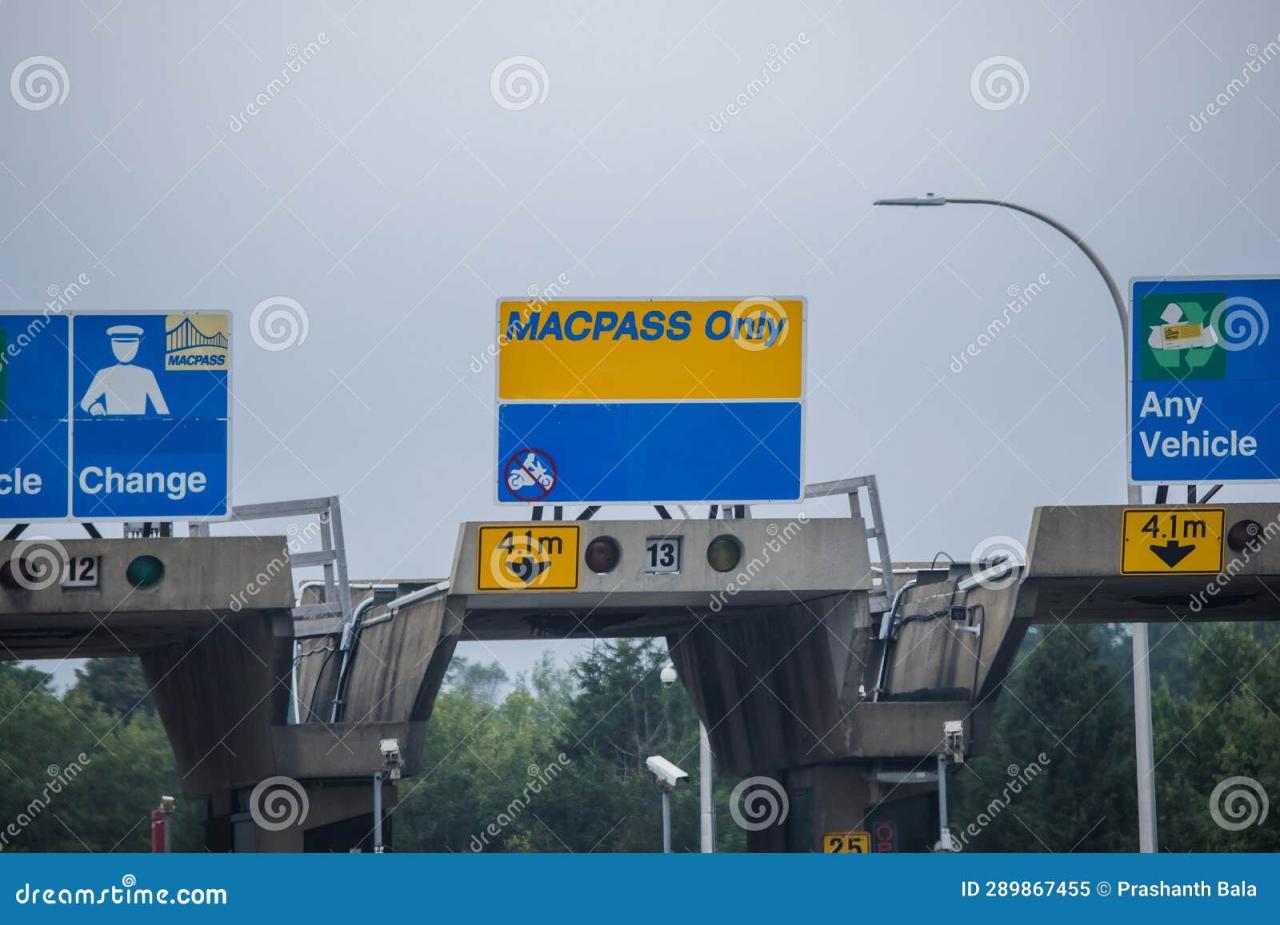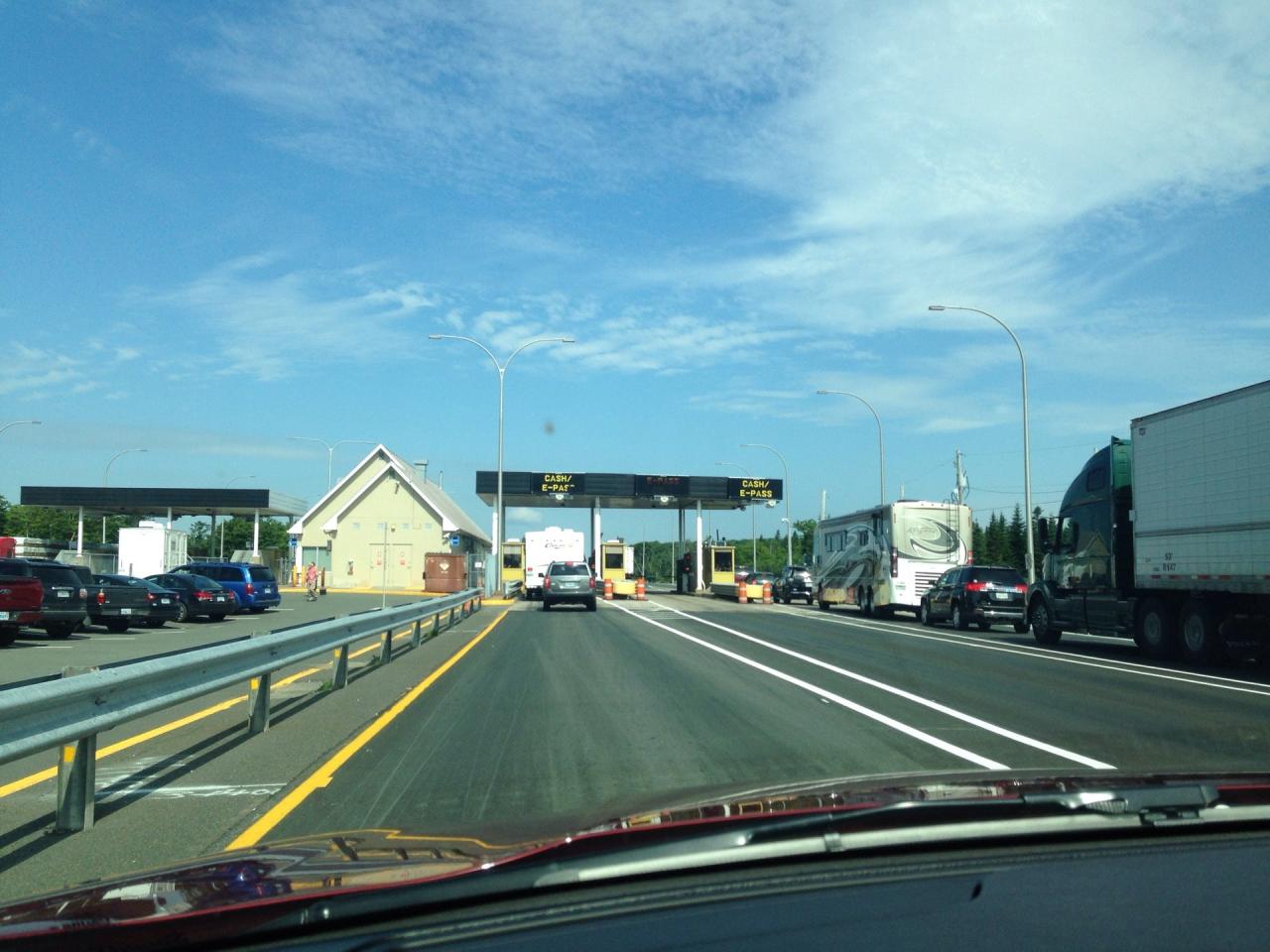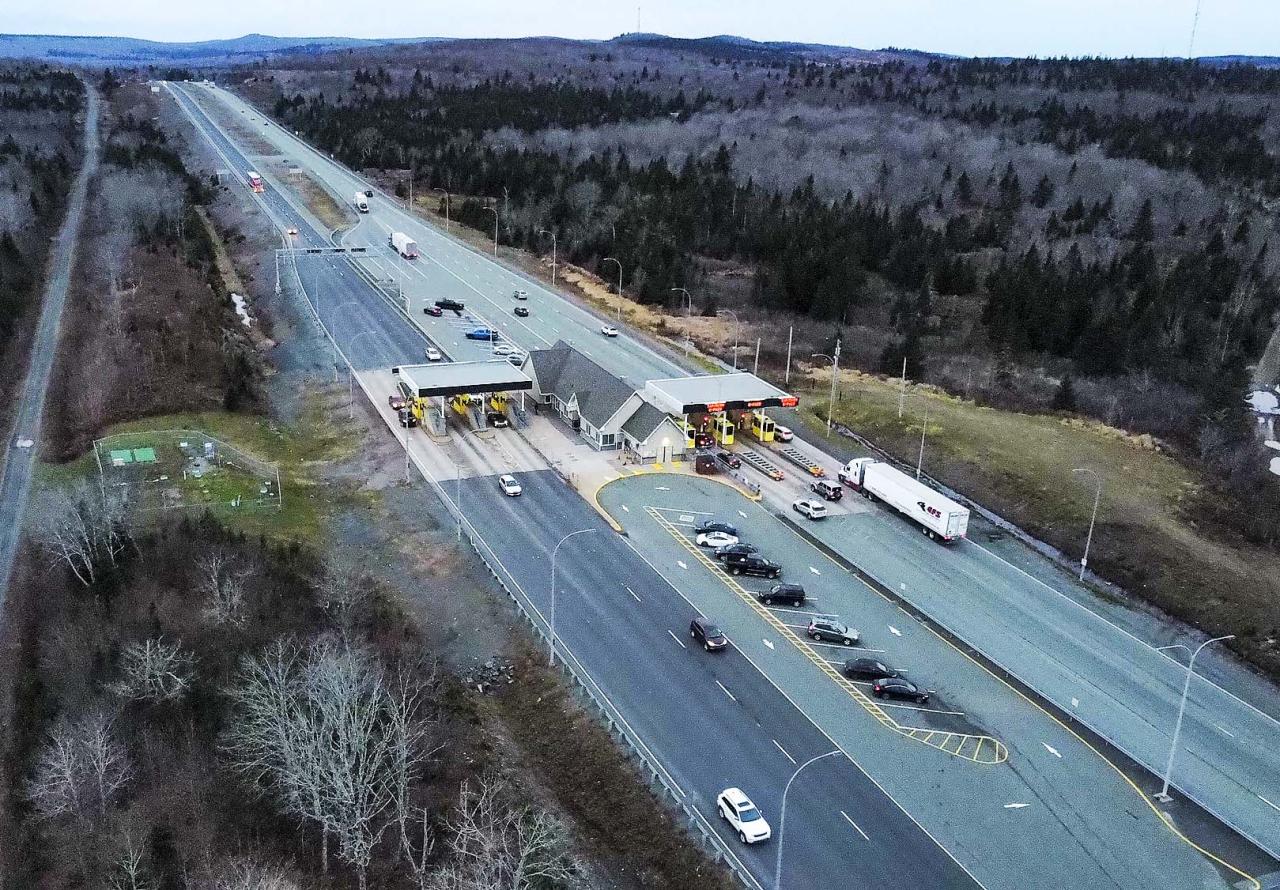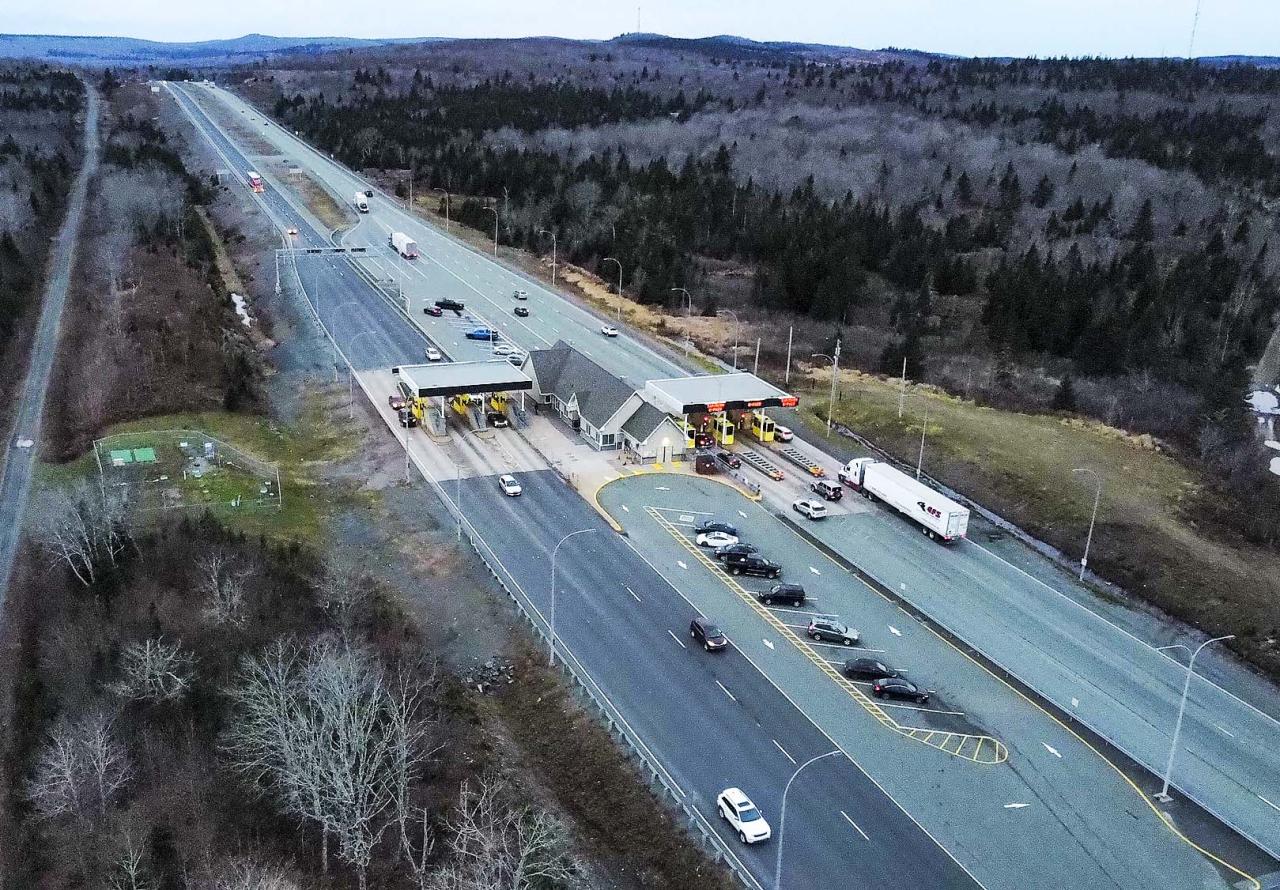Cobequid Pass Camera provides real-time traffic monitoring, significantly impacting driver safety and journey planning. This system utilizes strategically placed cameras to capture live footage of traffic flow along the Cobequid Pass, offering valuable insights into traffic conditions and aiding in incident response. Understanding the functionality, access methods, and impact of this technology is crucial for both drivers and authorities.
The network of cameras offers a comprehensive view of the pass, capturing details about traffic density, weather conditions, and potential hazards. Data gathered from these cameras helps authorities manage traffic flow, improve emergency response times, and enhance overall road safety. Access to this information can be invaluable for drivers planning their journeys, allowing them to make informed decisions about their travel routes and timing.
Cobequid Pass Traffic Conditions

Cobequid Pass, a vital transportation artery, experiences fluctuating traffic patterns influenced by time of day, day of the week, and weather conditions. Understanding these patterns is crucial for safe and efficient travel.
Typical Traffic Patterns
Peak hours generally occur during weekday mornings (7:00 AM – 9:00 AM) and evenings (4:00 PM – 6:00 PM), with significantly higher traffic volume compared to off-peak hours. Weekends see a more even distribution of traffic, though higher volumes are still expected during popular tourist times.
Impact of Weather Conditions
Adverse weather significantly impacts traffic flow. Heavy snowfall, fog, and rain often reduce visibility and road conditions, leading to slower speeds, increased congestion, and potential accidents. Winter storms can cause significant delays and even temporary closures.
Causes of Traffic Congestion
Congestion at Cobequid Pass can stem from several factors, including accidents, construction, seasonal influxes of tourists, and reduced visibility due to weather. Routine maintenance and unexpected incidents can also contribute to bottlenecks.
Weekday vs. Weekend Traffic
Weekday traffic exhibits distinct peak and off-peak periods, reflecting commuter patterns. Weekends tend to have a more consistent traffic flow, although peak periods may arise during popular tourist seasons or special events.
Average Travel Times
| Time of Day | Weekday | Weekend | Holiday |
|---|---|---|---|
| 7:00 AM – 9:00 AM | 30-45 minutes | 20-30 minutes | 25-40 minutes |
| 9:00 AM – 4:00 PM | 15-25 minutes | 10-20 minutes | 15-25 minutes |
| 4:00 PM – 6:00 PM | 30-45 minutes | 20-30 minutes | 25-40 minutes |
| 6:00 PM – 10:00 PM | 20-30 minutes | 15-25 minutes | 20-30 minutes |
Cobequid Pass Camera Locations and Functionality
A network of strategically placed cameras monitors traffic flow and enhances safety along Cobequid Pass. These cameras provide real-time data and visual records for various purposes.
Camera Locations and Purpose
Cameras are positioned at key locations along the pass, including entrances, exits, and areas prone to congestion or accidents. Their primary purposes include monitoring traffic flow, detecting incidents, and assisting with accident investigations. Specific locations are not publicly disclosed for security reasons.
Technical Specifications
The cameras utilize high-resolution imaging technology with a wide range of coverage to capture clear images, day and night. They are designed to withstand harsh weather conditions and maintain optimal functionality. Specific details regarding camera models and technical specifications are not publicly available.
Image Quality and Clarity
The cameras provide high-quality images with excellent clarity, enabling clear identification of vehicles and road conditions, even in low-light situations. Regular maintenance ensures optimal image quality.
Camera Location Map
A detailed map illustrating the precise locations and coverage areas of each camera is not publicly available due to security and privacy concerns. However, the strategic placement of the cameras ensures comprehensive coverage of the entire pass.
Access to Cobequid Pass Camera Feeds
Access to live and archived camera feeds is governed by specific regulations and protocols. Public access is limited for security and privacy reasons.
Methods of Access

- Law enforcement and emergency services have direct access to live feeds for real-time monitoring and response.
- Transportation authorities utilize the feeds for traffic management and infrastructure planning.
- Limited access to archived footage may be available through formal requests for specific incidents or investigations.
Limitations and Restrictions
Public access to live camera feeds is generally restricted. Access to archived footage is subject to approval and often requires a legitimate reason, such as involvement in an accident investigation.
Live Feeds vs. Archived Footage
Live feeds provide real-time information crucial for immediate response to incidents. Archived footage serves as a valuable resource for investigations and analysis of long-term traffic patterns.
Benefits and Drawbacks of Public Access
While public access to camera feeds could provide drivers with real-time traffic information, concerns about privacy and the potential misuse of the data necessitate restrictions. Unrestricted access could lead to security breaches or the dissemination of sensitive information.
The Cobequid Pass camera provides a fascinating real-time view of Nova Scotia’s landscape. Thinking about large-scale visual displays, one might consider the impressive technological advancements showcased at events like the orlando drone show , where coordinated drone formations create breathtaking aerial spectacles. Returning to the Cobequid Pass camera, its simpler, yet equally compelling, perspective offers a unique contrast to such elaborate drone displays.
Safety and Security Aspects of Cobequid Pass Cameras
The cameras play a vital role in enhancing road safety and security along Cobequid Pass, contributing to accident prevention and investigation.
Role in Enhancing Road Safety
The cameras act as a deterrent to reckless driving, improving overall road safety. Real-time monitoring allows for quick response to accidents and incidents, potentially minimizing their impact.
Use in Accident Investigations
Camera footage provides crucial evidence in accident investigations, allowing for accurate reconstruction of events and identification of contributing factors. This aids in determining liability and improving road safety measures.
Security Measures
Robust security measures are in place to protect camera feeds from unauthorized access. These measures include encryption, access controls, and regular security audits.
Examples of Positive Impact
Camera footage has been instrumental in resolving numerous traffic incidents, identifying reckless drivers, and assisting in the prosecution of individuals involved in crimes along Cobequid Pass. Specific examples are not publicly released to maintain the integrity of investigations.
Importance of Camera Maintenance
Regular maintenance and upkeep are essential to ensure the cameras’ optimal functionality and image quality. This includes regular inspections, cleaning, and necessary repairs or replacements.
Impact of Cobequid Pass Cameras on Drivers
The presence of cameras significantly influences driver behavior and perceptions of safety along Cobequid Pass.
Psychological Impact
Awareness of camera surveillance can encourage drivers to adopt safer driving practices, leading to reduced speeds and improved adherence to traffic regulations.
Influence on Driver Behavior
Studies have shown a correlation between camera presence and reduced instances of speeding, reckless overtaking, and other unsafe driving behaviors. Drivers tend to be more cautious in areas with visible cameras.
Cameras vs. No Cameras
Areas with camera surveillance generally exhibit lower accident rates and improved traffic flow compared to areas without cameras. This suggests a positive correlation between camera presence and road safety.
Deterrent to Reckless Driving
The potential for being caught on camera acts as a deterrent to reckless driving, promoting safer and more responsible driving behavior among motorists.
Driver Perceptions of Safety
| Factor | With Cameras | Without Cameras | Difference |
|---|---|---|---|
| Perceived Safety | Higher | Lower | Significant |
| Reported Speeding | Lower | Higher | Significant |
| Reported Accidents | Lower | Higher | Significant |
| Overall Driving Experience | More Positive | More Negative | Significant |
Illustrative Examples of Cobequid Pass Camera Footage (Without actual images)
While specific camera footage is not publicly accessible, illustrative scenarios can highlight the value of the camera system.
Resolved Traffic Incident
A two-vehicle collision occurred during a heavy snowstorm. Camera footage clearly showed one vehicle failing to stop at a red light, resulting in a collision. The visual elements included reduced visibility due to heavy snowfall, skid marks on the road, and the positions of the vehicles after impact. This evidence was crucial in determining fault and subsequent insurance claims.
The Cobequid Pass camera offers stunning views of the Nova Scotian landscape. It’s interesting to consider the technological advancements in visual display, as seen in sophisticated productions like the orlando drone show , which utilizes drones for breathtaking aerial displays. These advancements in technology, from fixed cameras to drone choreography, showcase the evolution of visual storytelling and entertainment, much like the Cobequid Pass camera provides its own unique perspective.
Clear Weather and Smooth Traffic, Cobequid pass camera

On a sunny afternoon, the cameras captured a scene of smooth, consistent traffic flow. Vehicles were moving at appropriate speeds, maintaining safe distances, and adhering to lane markings. The visual elements included bright sunlight, clear road visibility, and a steady stream of vehicles moving efficiently.
Challenging Weather Conditions
A heavy snowstorm significantly impacted traffic flow. The cameras recorded reduced visibility, slow-moving vehicles, and several minor accidents. The visual elements included heavy snowfall obscuring road markings, vehicles driving with hazard lights activated, and slow-moving traffic creating significant congestion.
The Cobequid Pass Camera system represents a significant advancement in traffic management and road safety. By providing real-time traffic information and assisting in incident response, these cameras enhance the overall driving experience and contribute to a safer environment for all users of the Cobequid Pass. Continued investment in and development of this system will likely further improve efficiency and safety on this vital transportation route.
FAQ Resource: Cobequid Pass Camera
What types of cameras are used in the Cobequid Pass system?
The specific camera types are not publicly disclosed for security reasons, but they are likely high-resolution cameras capable of operating in various weather conditions.
How is the footage from the cameras stored and archived?
Footage is likely stored securely on servers with appropriate retention policies. Access to archived footage may be restricted to authorized personnel for investigative purposes.
Monitoring the Cobequid Pass often involves challenges in accessing remote areas for visual inspections. To overcome this, innovative solutions like using drones are becoming increasingly important. For high-quality aerial imagery and data collection, organizations are turning to companies such as sky elements drones , which offer specialized equipment for environmental monitoring. This technology can significantly enhance the effectiveness of the Cobequid Pass camera surveillance system, providing a broader perspective and more detailed information.
Is there a cost associated with accessing the camera feeds?
Public access to live feeds is typically free, although access to archived footage may require specific authorization and potentially fees.
What happens if a camera malfunctions?
Maintenance protocols are in place to address camera malfunctions promptly. Redundancy measures may be in place to ensure continued coverage.
